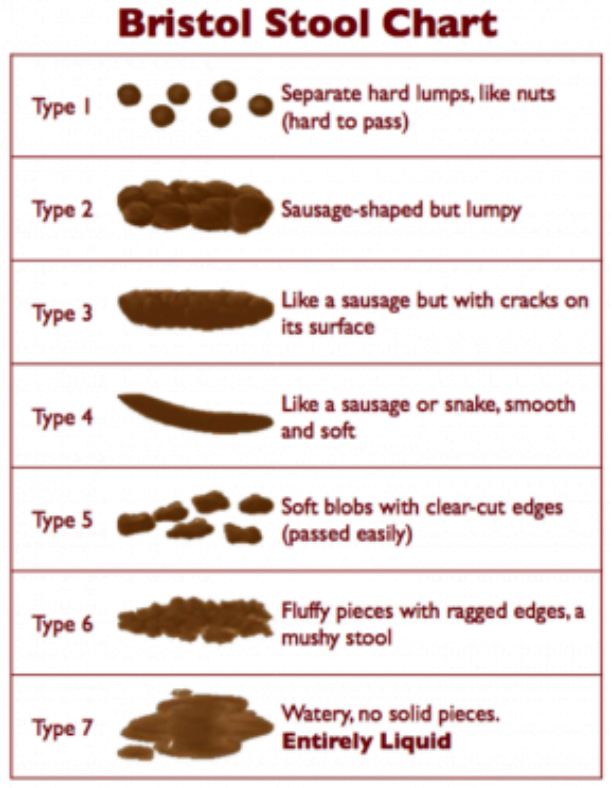Although a lot of people find it uncomfortable to talk about their poop, it’s very important to know certain aspects of it because it can reveal a lot about one’s well-being. Defecation is a crucial bodily function. When there is a change in bowel movements, it may be a consequence of changes in one’s diet; however, it could also be a sign of the body’s fight against an infection, or, a sign of a more serious disease or condition.
The stool is around 75% water, whereas the rest is a combination of fiber, dead and living bacteria, different cells, and mucus. A normal poop is usually smooth and soft, elongated, and whole. The texture should be uniform and the poop should be S-shaped. This shape comes from the shape of the lower intestine. When it comes to healthy poop color, it is definitely medium to light brown.

Small and hard lumpy poop-this may be a sign of acute inflammation of the small intestine. This type of stool is usually small, abrasive, and solid, with a diameter of 1 to 2 centimeters. This type of stool may occur in people who have been taking antibiotics and it usually causes anal bleeding.
Sausage shaped poop with lumps-this stool is very difficult to pass and may also cause anal bleeding. The diameter is between 3 to 5 centimeters and it is common among people who suffer from IBS.
Sausage shaped stool with cracked surface-this poop is very similar to the previous one. The main difference is that this one is processed faster.
Sausage-shaped poop, smooth, and soft-this kind of poop is normal and it’s common among people who defecate once in a day.
Soft blobs of stool with defined edges-this type of poop is present in people who defecate more than once per day after major meals.
Fluffy poop with ragged and torn edges-this stool has a soft texture and it may be a potential sign of high blood pressure and stress.
Diarrhea type of stool-this poop is similar to ordinary diarrhea; however, it happens in conjunction with constipation. Depending on the odor and color, this type of poop may be showing that the body is suffering from some disease or condition.
Black or bright red stool-this poop is a sign of bleeding in the GIT.
Pale brown or white stool-this may be a symptom of hepatitis, cirrhosis, or pancreatic disease.
Yellow-colored poop-usually, the poop is yellow when a person has gallbladder issues.
Here are a few easy tips that we suggest to support your gut:
HYDRATE. Unless you have a renal or cardiovascular issue that limits your water intake, most adults need to be drinking, at least, 68oz (2L) of fluid each day. This helps to soften the stool and enables fibre to work properly so that poop can move through your insides and evacuate easily.
USE A GOOD QUALITY PROBIOTIC. The friendly probiotic bacteria in our gut play a big role in digestion, immune function and keeping our intestines healthy. However, pesticides, antibiotics and many other factors affect our probiotic populations. A probiotic supplement can help to replenish our friendly gut bacteria and keep our digestive system happy!
FIT IN ENOUGH FIBER. There are two types of fiber that we need in our diet; insoluble fiber is the ‘roughage’ that bulks up our stools and ‘sweeps’ through our insides. Soluble fiber absorbs water and softens the stool. Getting enough of both types of fiber is important for making perfect poop!
SQUAT IT. Before artificial toilets were created, humans once squatted to void their bowels. This position naturally compresses the bowel walls and assists with gentle pressure to move bowel motions through. While we don’t suggest that pooping in the wild again is by any means a solution, propping your legs on a small stool under your toilet seat can help to mimic this natural process.
Leave a reply










